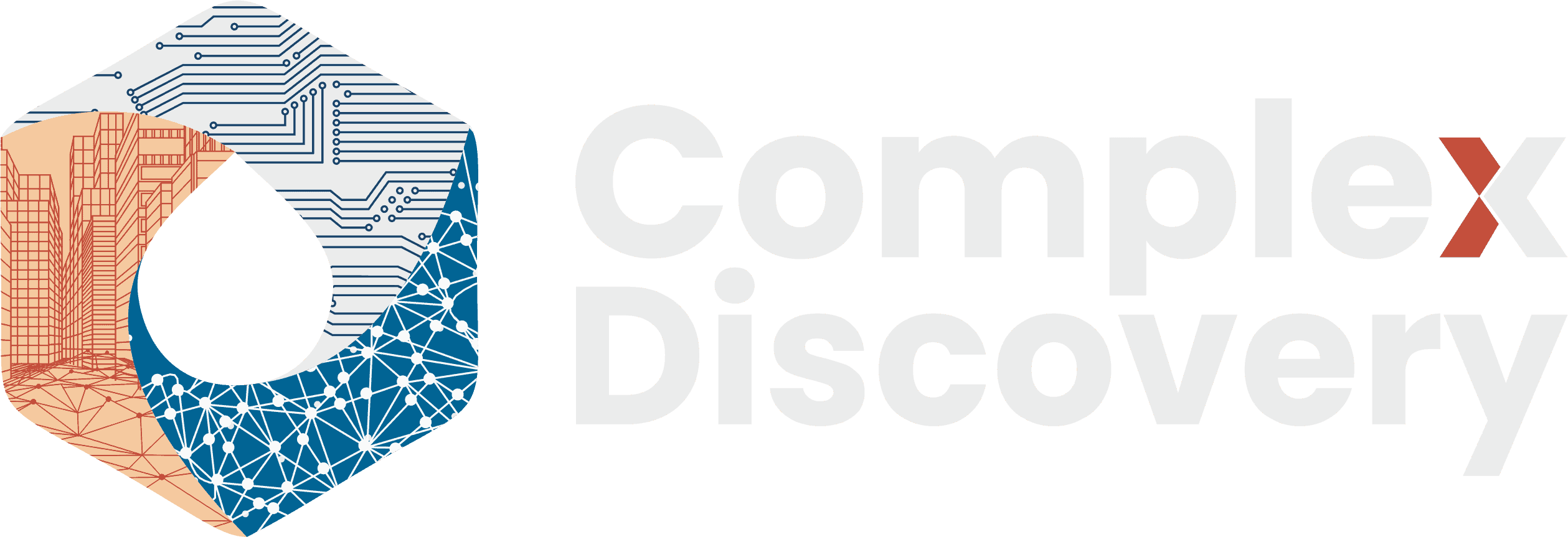Editor’s Note: Slush 2025 is a thermometer for the global tech economy, and what it revealed—the full-scale deployment of Generative AI and the rise of defense technology—presents an existential inflection point for data professionals. This article underscores the immediate, practical necessity of overhauling legacy information governance frameworks. For cybersecurity, the convergence of digital and hybrid threats demands a shift in focus toward data resilience and sophisticated auditability. For eDiscovery, the core challenge moves from managing data volume to ensuring the defensibility and integrity of AI-generated and AI-dependent ESI. Professionals must recognize that every startup’s hasty deployment of new, high-risk technology might eventually become a litigation matter or a regulatory enforcement action. Understanding the current pressures on innovation in Helsinki provides a forward-looking blueprint for mitigating risk in New York, London, and beyond. This is not about abstract future trends; it is about the policies and procedures that must be drafted, approved, and implemented today to secure the data of tomorrow.
Content Assessment: Data Provenance and Defense Tech: IG Lessons from Slush 2025
Information - 94%
Insight - 95%
Relevance - 94%
Objectivity - 92%
Authority - 92%
93%
Excellent
A short percentage-based assessment of the qualitative benefit expressed as a percentage of positive reception of the recent article from ComplexDiscovery OÜ titled, "Data Provenance and Defense Tech: IG Lessons from Slush 2025."
Industry News – Technology Beat
Data Provenance and Defense Tech: IG Lessons from Slush 2025
ComplexDiscovery Staff
HELSINKI -The chill air of a November morning in Helsinki did little to dampen the electric atmosphere that crackled around the Messukeskus Convention Centre. When over 13,000 founders, investors, and operators—representing trillions of dollars in assets under management—descended on the Finnish capital for Slush 2025 (November 19-20), it became clear that the ground state of technology had fundamentally shifted. The once-separate worlds of aggressive startup scaling and cautious legal compliance collided, creating a new, complex risk environment where the speed of innovation directly challenges the established order of cybersecurity, information governance, and eDiscovery.
The headline story from the packed stages and hushed investor meetings was the unsettling maturity of Generative AI. This wasn’t the wide-eyed hype of previous years; the conversations now revolved around implementation and trust. Founders were no longer asking if they should use AI, but how to deploy it reliably in highly regulated environments, particularly as reports continued to illustrate a pervasive market sentiment where consumers voiced distrust of AI-driven search and summaries, and a vast majority of internal pilots were failing to materialize productivity promises. This shift places a heavy burden on information governance professionals, who must now grapple with the provenance and reliability of machine-generated data. For instance, as AI agents increasingly assist in drafting complex documents, legal and compliance teams must immediately integrate rigorous audit trails into their data architecture to track which parts of a document were machine-generated and which were human-validated. Failing to establish this data lineage now will create catastrophic eDiscovery challenges when—not if—the first major AI-driven corporate litigation emerges.
The Velocity Trap: Security in the Age of Hybrid Conflict
The geopolitical currents running beneath the tech ecosystem were impossible to ignore, especially in Finland, a nation at the nexus of European security. Slush 2025 saw a heightened focus on defense and dual-use technology, a sector where secure-by-design principles are a non-negotiable floor, not an aspirational ceiling. This environment offers a harsh lesson for all startups, regardless of their sector: cybersecurity is a strategic imperative, not a technical checkbox.
The Finnish startup ecosystem, already a powerhouse for deep tech solutions, demonstrated resilience. Firms were developing solutions that go beyond perimeter defense, focusing instead on data resilience and critical infrastructure protection. For eDiscovery professionals, the blurring lines between cyberattack, infrastructure failure, and information warfare means that incident response plans must evolve. You can no longer assume a simple data breach; you must prepare for a scenario where core operational data is compromised, corrupted, or even weaponized as part of a hybrid campaign. As a practical tip, eDiscovery teams should collaborate directly with their Security Operations Center (SOC) to integrate threat intelligence into their preservation workflows, ensuring that potential legal hold data is prioritized for protection and rapid, forensically sound recovery.
Regulation as the New Design Constraint
The European context provided an additional layer of complexity, particularly with the looming presence of the AI Act. While some investors and founders championed the removal of regulations they felt were stifling the region’s tech industry against US and Chinese competition, others saw regulation as a market differentiator—a chance to build ‘trustworthy AI’ that could be exported globally. This divergence creates a classic information governance dilemma.
Startups building high-risk AI systems must treat compliance with the AI Act’s requirements—such as data quality, transparency, and human oversight—as a fundamental product feature from the very first line of code. This is where information governance provides the necessary blueprint. It’s no longer sufficient to bolt on compliance features later; for instance, any startup using Generative AI for highly sensitive B2B applications must document the training data provenance in a fully auditable way, detailing the data cleansing, bias mitigation efforts, and human feedback loops. This is the only way to defensibly address regulatory scrutiny and litigation discovery requests down the line.
The eDiscovery community needs to be paying close attention to the practical implications of the AI Act’s data quality and documentation mandates. When a dispute arises involving an AI model’s output, the model’s entire history—its training data, validation sets, and internal governance logs—will become potentially discoverable. Professionals should immediately update their data maps to include AI model registries and their associated data dependencies, treating them as new, high-risk Electronic Stored Information (ESI) sources.
The Human Element and the Startup Struggle
Beneath the big-stage announcements, a more granular story unfolded around talent, ethical development, and the startup struggle. A Slush survey released earlier in 2025 noted that fundraising and revenue growth were the most difficult hurdles for founders, with nearly 60% citing fundraising as a top concern, confirming the difficult, selective investment climate. The most successful founders attending Slush recognized that domain expertise, particularly in legal and security contexts, is what differentiates an AI tool from an AI solution. The idea that AI will simply replace knowledge workers is being replaced by the reality that it will augment the most skilled ones, creating a demand for ‘AI-fluent’ governance and security professionals.
This demands a proactive approach. Rather than fearing the automation of routine eDiscovery tasks, professionals should be upskilling to manage the AI systems themselves, focusing on the complex, judgment-based tasks that only human expertise can handle. Learn to audit the AI, challenge its output, and design the governance framework that dictates its use. The ultimate goal for the professional is to become the human-in-the-loop validator for highly complex, high-risk AI-driven workflows, ensuring ethical use and legal defensibility.
Slush 2025 illuminated a new path for the tech ecosystem, one paved with audacious innovation but guarded by stringent demands for security and trust. Helsinki hosted the collision between the future’s velocity and the legal reality of the present. As companies race to integrate AI, the question remains: are our information governance frameworks agile enough to secure and defend the data the future is built upon?
News Sources
- ComplexDiscovery Staff. (2025, November 19-20). Slush 2025. Reported by Rob Robinson. ComplexDiscovery.
- Slush is the start-up event that maps the smart money – here’s where investors are betting big for 2026 (Monocle)
- Slush’s 2025 Startup Struggle Survey reveals the current state of startups in Europe (Tech.eu)
- VCs weigh AI bubble fears, Europe’s defense awakening at Slush (PitchBook)
- Slush 2025 | November 19 & 20, 2025 (Helsinki, Finland)
- Slush 2025 Event Information (Explore Slush)
Assisted by GAI and LLM Technologies
Additional Reading
- How Finland Is Reshaping Defense: BORDERLAND at Slush 2025
- Google to CMOs at Slush 2025: Adapt to AI or Fall Behind
- Lessons from Slush 2025: How Harvey Is Scaling Domain-Specific AI for Legal and Beyond
- Building Stronger: The Porvoo Paradigm for Technology at Slush 2025
- Slush 2025 Survey: Startup Struggles Expose Risk, Resilience, and Opportunities for Governance Pros
Source: ComplexDiscovery OÜ




























